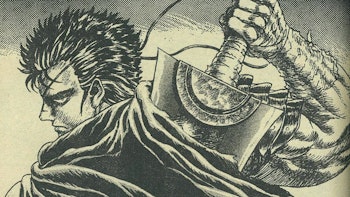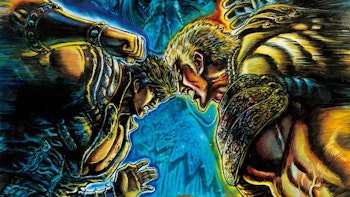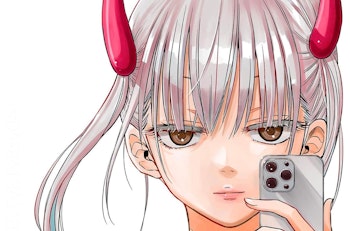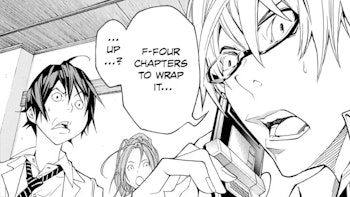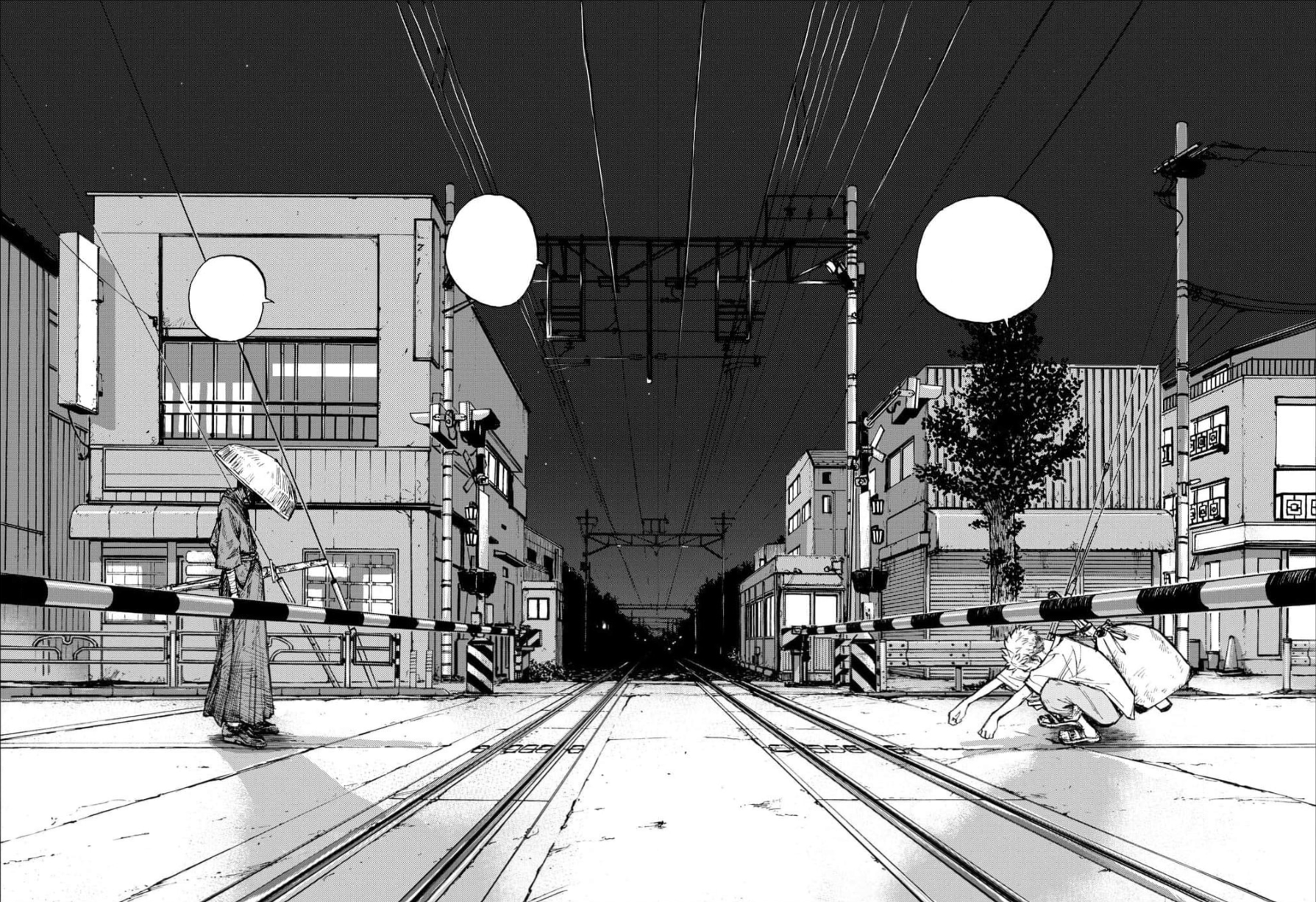
What would you do if you just finished working on a four-year project with basically no breaks? Most people would go and take a vacation, but not Kotoyama. Barely a year since wrapping up Call of the Night, he’s back with a new one-shot published in two parts in Weekly Shonen Sunday. Titled Minasoko, it perfectly encapsulates the ways in which he’s grown as an artist, as well as foreshadows what he might do in the future.
First of all, here’s the most exciting part: Minasoko is a sports series! Kotoyama hasn’t done one of these before, so it was exciting to see how he would approach the genre. In summary, the one-shot follows high school student Takasago who is very good at kendo, but doesn’t feel satisfied by the sport: he’s actually on the verge of quitting until he gets beaten by a strange samurai-like figure at a railway crossing. This then sparks a new journey of discovery as he tries to track down the culprit, rekindling his passion and even making a new connection along the way.
If there’s one thing Kotoyama has improved massively on in recent years, it’s his art and panelling. That’s not to say that he was bad at either of those things before, but that he didn’t have much opportunity to push the envelope and develop his skills: as a comedy series, Dagashi Kashi was pretty flat and more dialogue-heavy, while the latter half of Call of the Night dipped into some more action beats and forced him to draw in a way he wasn’t used to. The improvements he saw as a result shine through in Minasoko, as he elevates the otherwise normal activity of a sport through clear motion and effective action.
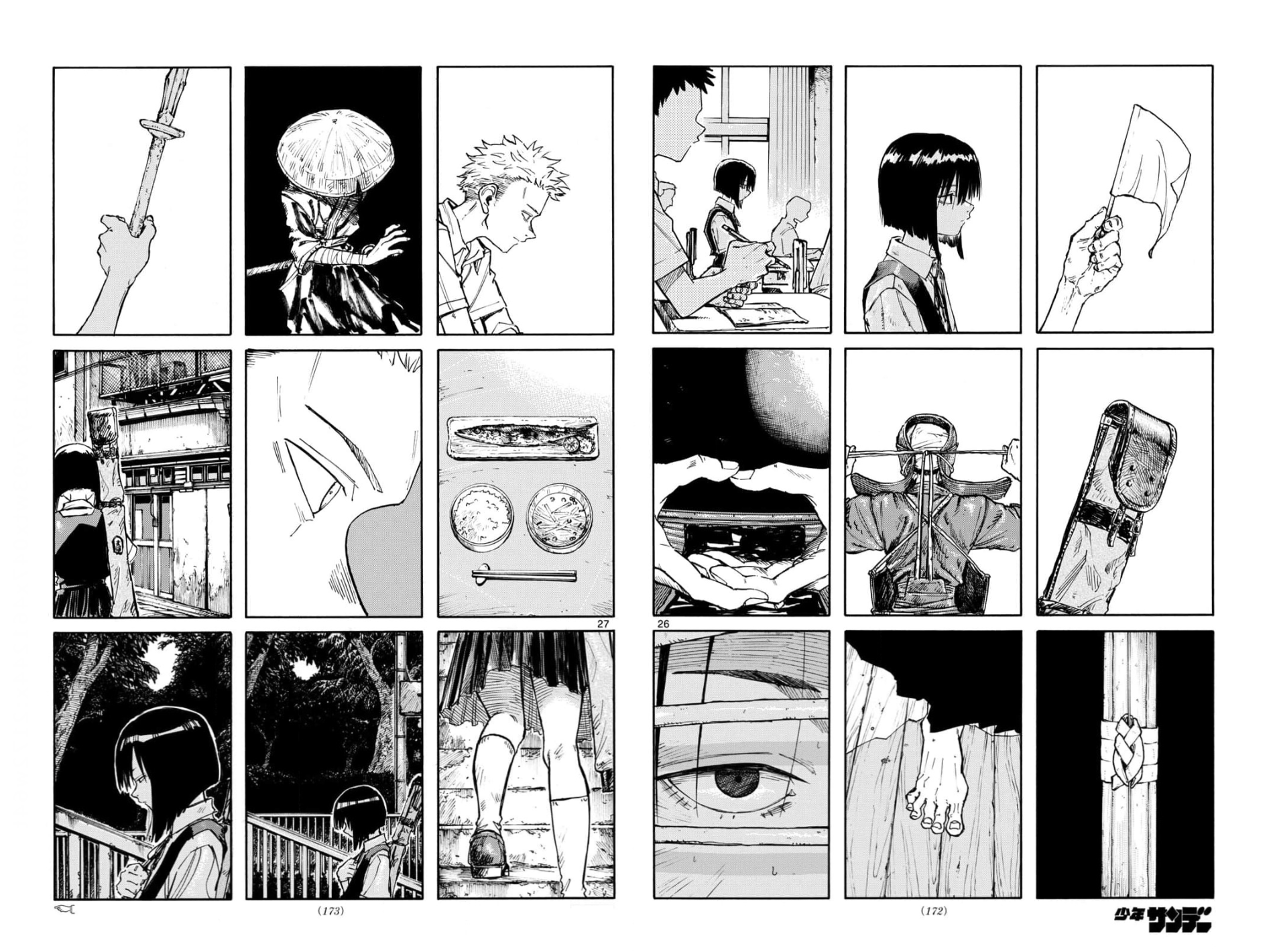
Long-time readers of Kotoyama’s work will, however, still feel quite at home here. Aside from his iconic angular character designs, there’s a sense of ennui that permeates the entire story: Takasago says that he’s sick of kendo for little reasons like getting sweaty and the fact that they have to shout, but nothing seemingly bad enough to make him quit while he’s ahead. Much like Kou from Call of the Night, he’s deeply dissatisfied with something, even if he doesn’t know exactly what.
Minasoko never does provide a concrete answer as to this conundrum, but it does provide a concrete road towards rehabilitation. In the second part of the one-shot, Takasago finds out the identity of the samurai-like figure who struck him and his teacher down during the night: Aumi, a young girl who just so happens to be a member of his old middle school kendo club. It’s ultimately through her that he learns to love kendo again, alongside developing a deep connection.
Love has always formed an obvious part of Kotoyama’s interests as a storyteller. Both Dagashi Kashi and Call of the Night revolve around a central couple, after all, but the kind of romance presented here is quite different: whereas those two series are very up front with their pairings, Minasoko is more subtle. It’s only in the ways that Takasago relates to Aumi and finds himself drawn to her that affection is implied, making for a surprisingly delicate love story.

Manga authors have long since used the format of a one-shot to test out new ideas and fill time between serializations. Some of the biggest series in the world started from initial one-shots, but the potential of the format has arguably changed completely since the breakout success of Look Back. Could Kotoyama be looking to replicate that success? And to what extent is Minasoko an indication as to what he might do next?
Regarding Minasoko’s potential as a viral hit akin to Look Back, the fact that both parts were published in Weekly Shonen Sunday to not much fanfare kind of speaks for itself. At the end of the day, Kotoyama isn’t nearly as well known as Tatsuki Fujimoto, even if he does have his own set of hardcore fans. It must also be said that Minasoko doesn’t contain quite as many heart-wrenching plot twists as Look Back: its value comes in an author taking on a genre he hasn’t tried before, perhaps with the intent of finding his next serialization.
If Kotoyama does end up doing a sports series for his next manga, Minasoko proves that it could be exciting. The specific ways in which the author improved over the course of Call of the Night would go a long way in making his take on the genre look utterly unlike anything else, all the while leveraging his existing strengths in telling relatable stories of love and human connection. With two successful series already under his belt, however, it’s safe to say that his future is a bright one.
You can read Minasoko in 2024 issues number 50 and 51 of Weekly Shonen Sunday.






